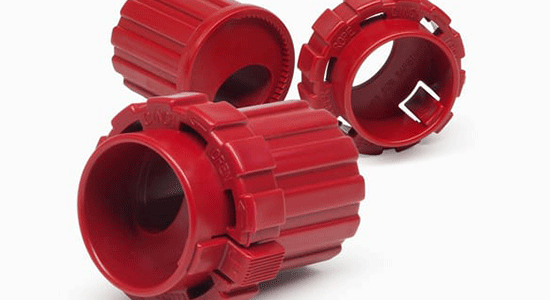
Want to Mold Better Plastic Parts? Keep These 3 Factors Top-of-Mind
Material selection, manufacturability & moldability, and proof-of-concept validation. These are 3 considerations that should be top-of-mind for every product designer and engineer who want to mold better plastic parts.
In this blog we provide an overview of these 3 critical areas with troubleshooting questions and supporting design guides to help optimize your plastic parts for the injection molding process.
As always, Xcentric’s team of experienced design consultants and application engineers are available to guide you from idea to production. Contact us any time at 586-598-4636 or sales@xcentricmold.com
Material, Manufacturability and Moldability, and Proofs-of-Concept Help Achieve Perfect Plastic Parts
Achieving your design intent for fit, form, and function is not easy. Though there are many variables to consider when designing parts for plastic injection molding, these three factors can help produce your end product on time and on budget with less risk.
Material Selection
Material is one of the most important variables when designing for plastic injection molding. This is because it impacts nearly every aspect of your plastic part.
For instance, the look and feel of the surface finish, the part’s strength and durability, and it’s chemical or environmental resistance are all driven by the polymer chosen. And, if you are designing for medical or healthcare, the material must meet stricter use criteria and regulations.
For many applications, choosing an injection molding partner with an inventory of stock plastic material can help reduce cost and speed time-to-market.
Consumer product manufactured using Nylon material.
Xcentric’s material experts compiled a list of 6 Common Plastic Resins complete with advantages and disadvantages. For a larger list of polymer options, check out Xcentric’s current stock material inventory.
Here are some questions to help guide you through the material selection process:
1. What is the expected use?
- Will the parts need to be flexible or rigid?
- Will parts need to withstand extreme pressure or weight? How frequently?
- Will the parts be exposed to extreme temperature, chemicals, or moisture?
2. What are expectations for surface finish and texture?
- What finish is required? Will the finish impact performance – for example, slip resistance, glare reduction, or UV protection.
- Is color matching required?
- Will text be printed on the parts? Is embossing required?
- Will your part require overmolding?
3. Are there regulatory requirements?
- Are you designing medical parts for implantation?
- Will parts need to withstand repeated sterilization?
- Will parts need to be approved by the FDA? Will the end products be used by children or pets?
Xcentric’s 8-piece sample kit can help you choose the optimal surface finish for your material.
Manufacturability and Moldability
We take for granted that the plastic products we use in everyday life will function as intended. But designing for injection molding is a tricky process. Analyzing for manufacturability and moldability can help to ensure your parts can be manufactured.
Manufacturability (DFM): Part-centric optimization
A DFM analysis ensures that your part design can be manufactured. DFM addresses a wide range of considerations includes wall thickness, material shrinkage, draft angles, and undercuts for example.
Identifying these issues early in the product development process can help to mitigate the risk of part failure that results in expensive redesigns and time delays.
Once your part is designed for manufacturability, the next step is to ensure it can be produced using the injection molding process. This is done by analyzing the tool for moldability.
Download: Design for Manufacturability Guide
Moldability: tool- and process-centric optimization
Complex geometries and part features like undercuts and threading can be a challenge to mold consistently. Designing for moldability, which is tool- and process-centric, ensures the tool will be able to produce your part to the desired fit, form, and function using the injection molding process.
One way to make this determination is with a Mold Flow analysis.
Mold flow analysis
Mold flow analysis is software that simulates an injection molding cycle using your specific material and design parameters. It provides a variety of diagnostic reports that provide mold designers insight into how well the plastic will fill the mold cavity. It also enables them to identify and predict potential flaws that would otherwise result in expensive design changes and time delays.
The analysis runs a variety of diagnostic reports to provide critical data such as Fill Time, Plastic Flow, Confidence of Fill, and Quality Prediction.
The final consideration that can help you to mold better parts is following the rapid prototype process to create a realistic proof-of-concept.
Download: Mold Flow Analysis Guide
Don’t skip the proof-of-concept prototype!
Rapid prototyping is the process of using a manufacturing technique, like injection molding or 3D printing, to create a realistic proof-of-concept prototype of your end product. It enables product designers to move quickly from CAD to physical part or assembly to testing and provides invaluable information to support creation of production tooling.
The proof-of-concept is analyzed for fit, form, and function in real-world testing and then iterated on based on performance. Once testing and validation are complete, and any modifications required are made, the design can be moved to production with confidence.
Read: Prototype Tooling Can Help Reduce Cost and Speed Time-to-Market
Conclusion
Evaluation of material selection, performing manufacturability and moldability analyses, and validating a physical proof-of-concept will go a long way to ensuring your plastic part achieves its design intent.
We’ve included links in this blog to resources that will help you dive deeper into each of the three factors.
Xcentric is always here to support our customers from ideation through production. Get us involved early in the process so we can help bring your concepts to market faster than ever.
Working on a project?
Let us help you get that first prototype underway and have that part in your hands in as few as five days. Our engineers help you through the design process. Get your project started now!